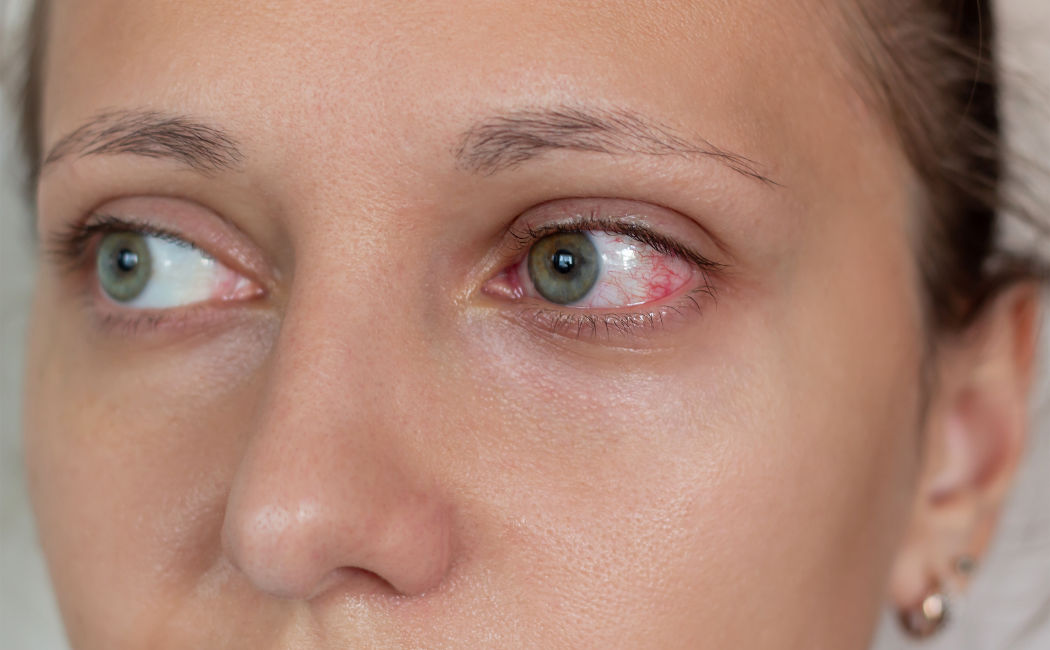
Keratitis ocular
What is it?
It occurs when the cornea, that transparent structure that we have in the anterior part of the eye through which images and light enter, becomes inflamed.
Symptom
The most occasional thing that produces us is a strong pain in the eyes, tears and we can get a little red. Sometimes it can cause ulcers, some of them serious even producing loss of vision. The people most likely to suffer keratitis are those who wear glasses or those who suffer some type of blow or trauma to the cornea.
Causes
Keratitis can come from different causes. The most common are the following:
Bacteria: It usually appears when the eye's defenses fail or on its surface. Bacteria do not usually appear because of an infection in the cornea. There are numerous causative bacteria.
Viruses: caused by adenovirus, herpes simplex virus and herpes zoster virus. The first one is a superficial virus. Herpes can be produced through the corneal layers, called corneal ulcers. The least common but not for it must be left unimportant are the measles virus, especially in childhood.
Protozoa, parasites and fungi: although they are much less common, they also have to do with the appearance of keratitis.
Skin diseases:Skin diseases: We know of acne rosacea as a frequent dermatosis that mainly affects the skin exposed to the sun from the face and that frequently affects the eye as well.
Neurological Diseases: It is known as neuroparalytic keratitis and occurs when the sensory nerve of the face is paralyzed, causing the discoid injury and consequent total sensitivity.
Keratitis due to exposure: occurs during incomplete lid closure (lagophthalmos) when we involuntarily blink, especially when sleeping at night. By leaving the eyelid open, the part below the cornea is more exposed to the outside and makes it dry.
Lack of vitamin A: Xerophthalmia is caused by the absence of vitamin A in your diet. The general symptoms are dry eyes and night blindness, also known as nictalopia.
Trauma: There are so many types of trauma that it is impossible to classify all of them. The most common are:
Photophthalmia: this type of trauma is caused by ultraviolet radiation exposure, with a latency period of about 8 hours between the onset of trauma itself and the onset of symptoms. Usually occurs when we practice sports in mountains, snow, etc ... and we do not protect our eyes well.
Very similar to photophthalmia is the ocular exposure to the arc voltaic. It also has a period between onset and symptoms. When keratitis appears for these two causes it is called photoelectric.
One of the most serious cases occurs when your eyes come into contact with dangerous chemicals involuntarily. Inflammation is most severe.
In addition, another case of keratitis may include excessive and continued use of lenses.
Types of Keratitis
We can classify them in superficial and deep. The superficial ones are the most normal to appear and affect the anterior layers of the cornea. They are also the simplest in their curettage since it disappears with a simple treatment. The deep, as the name suggests, affects the deeper layers. They tend to appear less but are more serious.
The superficial ones do not usually leave scars if a satisfactory cure treatment is carried out. In the case of the deep ones, the appearance of the annoying scars is really inevitable, which will lead to a little opacity and loss of vision. The solution will go through the corneal transplant.
Risk factor's:
Improper and unsanitary use of contact lenses.
Injuries due to a blow or friction.
Previous corneal surgeries
Diseases of the ocular surface.
Different factors such as lack of Vitamin A, diabetes or some mood states that can cause immunosuppression.
Prevention
It could be said that the ideal is to avoid the causes that can produce it. If you are a user of lenses you must be very strict with the hygiene that comes with the use of lenses, avoid their use at night and making a visit before any discomfort. If you are going to practice mountain or snow sports with the correct use of eye protectors. The same care in professions with ocular hazards as for example in agricultural or chemical subjects.
Treatment
The treatment will depend on the cause that causes it. If it has been infected it will be through the most appropriate medication for each patient via topical. It will be different depending on the cause that caused it.
